The Well-Tempered Ear
Classical music: Home or concert hall? Will older listeners follow new CDC guidelines about the coronavirus to stay home and avoid attending concerts? What will performers and presenters do in response?
17 Comments
PLEASE HELP THE EAR. IF YOU LIKE A CERTAIN BLOG POST, SPREAD THE WORD. FORWARD A LINK TO IT OR, SHARE IT or TAG IT (not just “Like” it) ON FACEBOOK. Performers can use the extra exposure to draw potential audience members to an event. And you might even attract new readers and subscribers to the blog.
By Jacob Stockinger
Late yesterday the U.S. Centers for Disease Control (CDC) issued new guidelines for behavior during the outbreak of the coronavirus and COVID-19.
The CDC is asking all adults over 60, especially those with compromised immune systems and serious underlying illnesses and conditions, to “stay home as much as possible” and avoid attending events with big crowds. (Below is a sample of a full house at the Madison Symphony Orchestra in Overture Hall.)
Here is the full story — which also mentions other kinds of mass events such as movie theaters, mall shopping, sports events and religious services — from CNN: https://www.cnn.com/2020/03/06/health/coronavirus-older-people-social-distancing/index.html
Moreover, the new guidelines apply nationwide — including here in Wisconsin where only one case has been confirmed and is now healthy– during the increasingly widespread, worldwide outbreak of confirmed cases and deaths.
The Ear wonders if the new advice will hit classical music especially hard because so much of the audience for it is made up of older people who are more vulnerable.
Will the guidelines affect your own attendance at concerts, even tonight and this weekend at the Madison Symphony Orchestra, the University of Wisconsin-Madison and the Wisconsin Union Theater?
Will a lack of attendance and a more severe outbreak lead to empty concert halls and the cancellation of concerts? Refunds for seniors?
Will the guidelines lead to alternative ways of “attending” and hearing, such as live-streaming and other virtual attendance?
Pretty soon we should start hearing from music presenters and performers about their reactions, solutions and advice.
Meanwhile, here is a news story from The New York Times about what one string quartet did in Venice, Italy: https://www.nytimes.com/2020/03/04/arts/music/arts-coronavirus.html
Are you an older or vulnerable person?
Will you go to concerts or stay home?
What do you think presenters and performers should do to deal with the situation?
Please leave word about your plans and your thoughts.
The Ear wants to hear.
Tags: #BigCrowd, #BlogPost, #BlogPosting, #CentersforDiseaseControl, #ChamberMusic, #CNNNews, #ConcertHall, #COVID-19, #FacebookPost, #FacebookPosting, #FullHouse, #HomeWebsite, #ImmuneSystem, #JacobStockinger, #MadisonSymphonyOrchestra, #MallShopping, #MovieTheaters, #NewsUpdate, #ReligiousServices, #SeniorCitizen, #SocialDistance, #SportsEvents, #StringQuartet, #TheEar, #TheNewYorkTImes, #TheU.S., #UnitedStates, #UniversityofWisconsin-Madison, #VeniceItaly, #WisconsinUnionTheater, 60, adult, advice, advisory, alert, alternative, America, American, Arts, ask, audience, Beethoven, behavior, blog, cancel, cancellation, case, cases, CDC, Centers for Disease Control, Chamber music, church, Classical music, classicalmusic, CNN, compromised, Concert, concert hall, condition, confirm, confirmed, coronavirus, crowd, death, distance, empty, Facebook, forward, full house, games, guidelines, hearing, hit, Home, home website, idea, ill, illness, immune, immune system, isolate, isolation, Italy, Jacob Stockinger, Johannes Brahms, know, large, like, live-stream, Ludwig van Beethoven, Madison, Madison Symphony Orchestra, mall, mall shopping, mass, movie theaters, Music, nationwide, new, New York City, news, online, opera, Orchestra, outbreak, Overture Center, performer, performers, plans, post, posting, presenter, prevention, quarantine, reaction, refund, Religion, religious services, senior, senior citizen, share, Shopping, sick, social, social distance, solution, Sports, spread, stay, story, String quartet, symphony, tag, The Ear, The New York Times, The U.S., theater, theatre, think, tonight, underlying, United States, University of Wisconsin–Madison, UW-Madison, Venice, virtual, virus, vulnerable, way, Website, weekend, widespread, Wisconsin, Wisconsin Union Theater, word, worldwide, yesterday
Classical music: The New Milwaukee Consort performs Renaissance and early Baroque love songs this Monday night in Spring Green
1 Comment
IF YOU LIKE A CERTAIN BLOG POST, PLEASE SPREAD THE WORD. FORWARD A LINK TO IT OR, SHARE IT or TAG IT (not just “Like” it) ON FACEBOOK. Performers can use the extra exposure to draw potential audience members to an event. And you might even attract new readers and subscribers to the blog.
By Jacob Stockinger
The Rural Musicians Forum will present the New Milwaukee Consort in a program of Baroque love songs on this coming Monday, Aug. 5, at 7:30 p.m. at the Unity Chapel in Spring Green.
This group of professionals and experts in early music includes soprano Kristin Knutson (below top), who competed in the 2015 Handel Aria Competition in Madison (in the YouTube video at the bottom); cellist and viol player Charlie Rasmussen (below middle); and lutenist Tim Sterner Miller (below bottom). They will perform on period instruments, bringing audiences back in time to the courts and chambers of Italy, England and France.
The New Milwaukee Consort is dedicated to the music of the European Renaissance and Baroque eras, crafting intimate performances around stories in words and music that resonate across the centuries.
They particularly relish bringing lesser-known sounds of the 17th century to modern audiences, from the work of women composers such as Barbara Strozzi (below) to music from handwritten manuscripts documenting the early development of the cello and ongoing experiments on the lute.
This concert features music from the chamber cantatas of the Venetian singer and composer Strozzi to celebrate her 400th birthday as well as works by her compatriots Claudio Monteverdi and Taruinio Merula; Elizabethan songs by lutenist and composer John Dowland (below); and “airs de cour” (Court music) by French court composer Etienne Moulinie.
Interwoven with these vocal works are pieces for the lute by Dowland and his contemporary Nicholas Vallet; for the viola da gamba by Tobia Hume and Marin Marais (below); and for the cello by Giulio Ruvo, Francesco Supriani and Giuseppe Jacchini.
This is an opportunity to enjoy some of the most precious pieces of Renaissance and Baroque era in the beautiful Unity Chapel (below) designed by Frank Lloyd Wright.
The Chapel is located at 6597 County Highway T in Spring Green.
Admission is by free will offering, with a suggested donation of $15.
Tags: #BarbaraStrozzi, #BaroqueEra, #BaroqueLoveSongs, #BaroqueMusic, #BlogPost, #BlogPosting, #ChamberMusic, #CharlieRasmussen, #ClaudioMonteverdi, #CountyHighway, #CourtMusic, #EtienneMoulinie, #Europeanmusic, #FacebookPost, #FacebookPosting, #FrancescoSupriani, #FrankLloydWright, #FreewillOffering, #Frenchcomposer, #GeorgeFridericHandel, #GiulioRuvo, #GiuseppeJacchini, #Handel'sMessiah, #HandelAriaCompetition, #HistoricallyInformedPerformancePractices, #JohnDowland, #KristenKnutson, #LuteMusic, #MadisonBachMusicians, #MarinMarais, #MilwaukeeWisconsin, #NewMilwaukeeConsort, #NicholasVallet, #PeriodInstruments, #RenaissanceEra, #RenaissanceMusic, #RuralMusiciansForum, #SopranoSinger, #SpringGreen, #TaruinioMerula, #TimSternerMiller, #TobiaHume, #UnityChapel, #VeniceItaly, #VioladaGamba, #VocalMusic, #WomenComposers, #YouTubevideo, aria, Arts, audience, Barbara Strozzi, Baroque, barpque, beautiful, birthday, blog, Cantata, cellist, Cello, Chamber music, Charlie Rasmussen, Classical music, Claudio Monteverdi, compatriot, composer, Concert, contemporary, county highway, court, court music, Craft, design, document, documentation, donation, Early music, Elizabethan, England, enjoy, era, Etienne Moulinie, Europe, European, experiment, expert, Facebook, France, Francesco Supriani, Frank Lloyd Wright, free will, freewill, French, George Frideric Handel, Giuseppe Jacchini, Handel Aria Competition, handwritten, historically informed performance practices, intimate, Italy, Jacob Stockinger, John Dowland, Love, love songs, lute, lutenist, Madison, Madison Bach Musicians, manuscripts, Marin Marais, Milwaukee, modern, Music, New Milwaukee Consort, Nicholas Vallet, offering, opportunity, period instruments, pieces, player, post, posting, precious, professiojal, program, Renaissance, Rural Musicians Forum, singer, song, soprano, sounds, Spring Green, Spring Green Wisconsin, suggest, Taruinio Merula, Tim Sterner Miller, Tobia Hume, United States, Unity Chapel, University of Wisconsin–Madison, Venetian, Venice, Viol, viola de gamba, vocal, vocal music, Wisconsin, women, women composers, words, YouTube
Classical music: There was so much to like about the Grand Tour finale of the 2019 Madison Early Music Festival. But where were the high notes in Allegri’s legendary “Miserere”?
8 Comments
IF YOU LIKE A CERTAIN BLOG POST, PLEASE SPREAD THE WORD. FORWARD A LINK TO IT OR, SHARE IT or TAG IT (not just “Like” it) ON FACEBOOK. Performers can use the extra exposure to draw potential audience members to an event. And you might even attract new readers and subscribers to the blog.
By Jacob Stockinger
Fair is fair.
Before he talks about last Saturday night’s conclusion of the successful 2019 Madison Early Music Festival – which marked its 20th anniversary — The Ear has a confession to make: He generally prefers later Baroque music and he generally prefers instrumental music to vocal or choral music.
That said, he nonetheless had a memorable and very enjoyable time on the “Grand Tour” during the well-attended All-Festival concert. There was so much to like and to admire.
The concert used the conceit of a Grand Tour by a composite 17th-century traveler going to London, Venice, Rome, Naples, Paris and Dresden to take in the local sights and local music, and included lesser-known composers such as William Lawes and William Child as well as such famous figures as Claudio Monteverdi, Giovanni Gabrieli , Jean-Baptiste Lullyand Heinrich Schütz.
Like most journeys, this one – once again assembled in an ingenious scissors-and-paste job by early music specialist Grant Herreid (below) – had many entertaining and uplifting moments.
But it also had one big disappointment.
The Ear really looked forward to hearing a live performance of the famous “Miserere” by Gregorio Allegri (below) as a high point. But those haunting, ultra-high descant notes that give you goosebumps and that you never forget hearing just never materialized.
Maybe it had to do with the different ornamentation that the MEMF forces used. Maybe it was based on a different manuscript or score. Maybe there was no one capable of singing those spellbinding and unforgettable high notes.
Whatever the reason, The Ear’s hope for a live performance of the dramatic and iconic work were dashed and the famous, even classic, recorded versions – the 1980 recording by the Tallis Scholars is heard in the YouTube video at the bottom — remain for him the unsurpassed standard.
The evening also had its ironies. That same night on the NBC TV news The Ear saw a story about “overtourism” in Europe and China. Venice, for example, has now shrunk to only about 50,000 unhappy residents who put up with some 20 million tourists a year.
But centuries ago, travel was a rare and exotic luxury of the wealthy and well-educated, not an affordable indulgence or curiosity by ever-expanding middle classes. And this metaphorical trip proved an ideal vehicle to sample 16th- and 17th-century music in England, France, Germany and Italy.
Combining high culture and low, Herreid chose witty and detailed travelogue texts that gave the audience the rich flavor of various cultures at the time.
Details mattered to the four sharp-eyed travelers on which this tour was based. So as “our hero” wandered, we got to hear about the “libidinous ladies” of Naples and the musical talented courtesans of Venice as well as the richly attired archbishop of Paris attending a feast day service in the newly finished Notre-Dame cathedral.
Such descriptions were well delivered by unnamed narrators (below) from the chorus and proved a refreshingly earthy and entertaining counterpoint to the more serious spiritual and religious music of the era.
Another big satisfaction was the exceptional quality of the ensemble playing – exhibited even in large amounts of less interesting music — by the many singers and instrumentalists on the stage of Mills Hall, and, at one point, in the hall’s balcony.
Whether the players and singers were conducted by Herreid or by assistant conductor Jerry Hui — a UW-Madison graduate who is now a tenured professor at UW-Stout — the music sounded tight, authentic and expressive.
As for more superficial pleasures, it is great visual fun watching such early versions of modern string, wind and percussion instruments being played — trombone-like sackbuts, oboe-like shawms, flute-like recorders and lute-like theorbos. (Below are cello-like viols.)
The players, both faculty and students, were particularly convincing on their own in the sound painting done to depict battle scenes and political upheaval. And who will ever forget the surprise of loud foot-stomping by all the performers and conductor?
Herreid was absolutely spot-on to keep the program to about 80 minutes with no intermission. It helped the audience stay in the spirit of the Grand Tour and added cohesion to the program.
The Grand Tour, in short, proved outstanding in concept and excellent in execution.
But was The Ear alone in missing to those high notes?
Tags: #All-FestivalConcert, #ArgentineanComposer, #BaroqueEra, #BaroqueMusic, #BaroqueOrnamentation, #BaroqueRecorder, #BaroqueSingingStyle, #BlogPost, #BlogPosting, #BlogReview, #ChineseTourism, #ChoralMusic, #ClassicalRecording, #ClaudioMonteverdi, #DresdenGermany, #EnsemblePlaying, #FacebookPost, #FacebookPosting, #FacultyMember, #FeastDay, #GiovanniGabrieli, #GrandTour, #GrantHerreid, #GregorioAllegri, #HeinrichSchütz, #HighCulture, #HighPoint, #InstrumentalMusic, #Jean-BaptisteLully, #JerryHui, #LivePerformance, #LondonEngland, #LowCulture, #MadisonEarlyMusicFestival, #MeadWitterSchoolofMusic, #Middle-Class, #MillsHall, #Musicfaculty, #MusicReview, #NaplesItaly, #NBCNews, #NotreDame, #NotreDamedeParis, #ParisFrance, #ReligiousMusic, #RomeItaly, #SaturdayNight, #Scissors-and-Paste, #Sharp-eyed, #SistineChapel, #SoundPainting, #TallisScholars, #TelevisionNews, #theorbomusic, #UniversityofWisconsin-Madison, #VeniceItaly, #VocalMusic, #WealthyPeople, #Well-Attended, #Well-Education, #WilliamLawes, #YouTubevideo, ago, All-Festival concert, anniversary, anonymous, archbishop, Arts, attire, audience, authentic, balcony, Baroque, Baroque music, battle, blog, capable, cathedral, Cello, centuries, century, China, choral music, chorus, classic, Classical music, Claudio Monteverdi, cohere, cohesion, Compact Disc, composer, composite, concept, Concert, conduct, conductor, confession, counterpoint, courtesan, culture, cultures, deliver, delivered, description, detail, detailed, disappointment, drama, dramatic, Dresden, Early music, earthy, England, enjoyable, ensemble, entertaining, era, Europe, evening, excellent, execution, exotic, expressive, Facebook, faculty, fair, famous, feast day, fine, finish, flavor, flute, foot, forces, forget, forward, France, fun, Germany, Giovanni Gabrieli, goosebumps, Grand Tour, Grant Herreid, Gregorio Allegri, haunting, Heinrich Schütz, high, high culture, high notes, high point, iconic, ideal, ingenious, instrumental, instrumental music, instrumentalists, interesting, intermission, ironies, irony, Italy, Jacob Stockinger, Jean-Baptiste Lully, Jerry Hui, journey, ladies, lesser-known, libidinous, libido, like, link, live performance, local, London, loud, low, low culture, Lully, lute, luxury, Madison, Madison Early Music Festival, manuscript, materialize, matter, Mead Witter School of Music, MEMF, memorable, metaphorical, million, Mills Hall, Miserere, moment, Music, music review, Naples, narrator, NBC, new, news, nightly, Notre Dame, Notre Dame de Paris, Oboe, Orchestra, ornamentation, outstanding, overtourism, Paris, percussion, performer, playing, pleasurer, political, post, posting, prefer, professor, program, rare, reader, recorder, recording, refreshing, religious, religious music, resident, review, rich, Rome, sackbut, sample, satisfaction, Saturday night, scene, score, serious, service, share, shawm, short, sights, singers, Singing, Sistine Chapel, Sound, sound painting, spellbinding, spirit, spiritual, stage, standard, stomp, string, successful, superficial, surprise, tag, talented, Tallis Scholars, Television, television news, tenure, texts, theorbo, tight, time, tourism, tourists, traveler, travelogue, trip, Trombone, TV, unforgettable, unhappy, United States, University of Wisconsin-Madison School of Music, University of Wisconsin–Madison, unknown, unnamed, unsurpassed, upheaval, uplifting, UW-Stout, Vatican, vehicle, Venice, version, Viol, Viola, Violin, vocal music, watch, wealth, wealthy, well-educated, William Lawes, Wind, Wisconsin, witty, year, YouTube
Classical music: The Madison Early Music Festival’s 20th anniversary Grand Tour includes a silent movie and rare books as well as lots of varied music to mark its success after 20 years. Part 2 of 2
Leave a Comment
IF YOU LIKE A CERTAIN BLOG POST, PLEASE SPREAD THE WORD. FORWARD A LINK TO IT OR, SHARE IT or TAG IT (not just “Like” it) ON FACEBOOK. Performers can use the extra exposure to draw potential audience members to an event. And you might even attract new readers and subscribers to the blog.
By Jacob Stockinger
A big anniversary deserves a big celebration – and that is exactly what the organizers of this year’s Madison Early Music Festival, which is marking its 20th year, have come up with.
All concerts include a pre-concert lecture at 6:30 p.m. The concerts begin at 7:30 p.m.
Here’s the link for all the information about MEMF: https://memf.wisc.edu/
Tickets are $90 for an all-event pass. Individual concerts are $22, $12 for students. Tickets are available for purchase online and by phone at 608-265-ARTS (2787) with a $4 service fee; or in person at the Campus Arts Ticketing Box Office @ Memorial Union.
Co-artistic director Cheryl Bensman-Rowe recently wrote about the festival in a Q&A for this blog. Yesterday she spoke about the overall concept and the first weekend’s concerts. Here is a link to Part 1:
Here is Part 2 of 2:
What events take place next week?
The concert on Tuesday, July 9, is going to be a unique experience for MEMF audiences. HESPERUS creates the soundtrack for the 1923 silent film “The Hunchback of Notre Dame” with music (below) from 14th- and 15th-century France. (The cathedral was started in 1163 and finished in 1345.)
Compositions include French and Burgundian music from 1300 to 1500, featuring Guillaume de Machaut, Jehan l’Escurel, Guillaume Dufay, as well as lesser-known composers such as Vaillant, Morton and Borlet.
On Friday, July 12, the vocal ensemble Calmus (below) performs “Faith and Madness,” a program of a dialogue between sacred music masterpieces followed by madrigals that portray madness, love, war and loneliness.
Composers include Giovanni Pierluigi da Palestrina, Heinrich Schütz, Claudio Monteverdi, Carlo Gesualdo, Clement Janequin and others.
All of the singers are graduates of Leipzig’s renowned St. Thomas Church Choir School. Calmus was founded in 1999. This a cappella quintet embodies the rich choral tradition of its hometown, the city associated with Johann Sebastian Bach and Felix Mendelssohn.
To hear a preview of their arrangement of Bach’s “Nun komm, der Heiden Heiland,” BWV 659, visit: https://youtu.be/WNzzUU0GcF4
Can you tell us about the program and performers for the All-Festival concert on Saturday, July 13?
The All-Festival Concert includes all of our workshop participants and faculty. We work together to prepare the concert all week and it is truly a MEMF community project. Grant Herreid (below) has created the All-Festival program this year. Grant is a genius at designing a program that tells a musical story featuring MEMF’s faculty and participants.
“Musical Postcards from The Grand Tour” features a narrator, loosely based on Thomas Coryat (below, at sea and in the Alps), the English 17th-century century travel writer, who, as a young man, travels throughout Europe in search of music. Beginning in London, 1641, the musical itinerary continues to Venice, Rome, Naples, Dresden, Paris, and back to London.
The program features so many wonderful composers, and the large ensemble pieces are: the Gloria from Monteverdi’s Selva morale et spirituale; the beautiful Miserere of Gregorio Allegri; Nun danket alle Gott by Heinrich Schütz; Domine salvum fac regem setting by Jean-Baptiste Lully; and, as an ending, This point in time ends all your grief from Ye tuneful muses by Henry Purcell.
Are there other sessions — guest lectures, certain performers, particular works — that you especially recommend for the general public?
All the planning that goes into each festival leads me to encourage the general public to attend everything! The concert series, lectures and workshops have so much to offer.
The special moments that I’m looking forward to are singing in the All-Festival concert and performing Allegri’s Miserere,a stunning piece that I have never heard performed in Madison. (You can hear it in there YouTube video at the bottom.)
I also look forward to hearing the fantastic musical soundtrack created by HESPERUS for the silent movie “The Hunchback of Notre Dame” and the Calmus singing connection back to Bach through their musical education in Leipzig, plus experiencing all the different travelogues of the past as they come to life through narrations and music.
Special events include a dance with a live band drawn from the MEMF Faculty with dance instruction by Peggy Murray, Grand Tour Dance Excursions, at the Memorial Union in the Great Hall on Thursday, July 11, at 7:30 pm. https://memf.wisc.edu/event/07-11-2019-2/
The lecture series features some well-known Madisonians like J. Michael Allsen (below top), who writes program notes and lectures for the Madison Symphony Orchestra and Maria Saffiotti Dale (below bottom), curator at the Chazen Museum of Art.
There will be a special exhibit created for MEMF in the lobby of Memorial Library by Jeanette Casey, the head of the Mills Music Library and Lisa Wettleson of Special Collections at Memorial Library. This curated display includes materials about the Grand Tour, including one of the oldest travelogues from 1611 written by Thomas Coryat.
The exhibit will be in the lobby of Memorial Library (below) and open to the public from Saturday, July 6, through Thursday, July 18, with a special talk about the exhibit during the festival on Monday, July 8, at 11:30 a.m.
This partnership allows the library to display rarely seen original and facsimile publications, some dating back to the 15th and 16th centuries within the context of the MEMF theme.
Is there anything else you would like to add?
In 1611 Thomas Coryat, the author of the travelogue Crudities foretold what you will hear at MEMF in 2019:
“…I heard the best musicke that ever I did in all my life…so good that I would willingly goe an hundred miles a foote at any time to heare the like…the Musicke which was both vocall and instrumental, so good, so delectable, so rare, so admirable, so superexcellent, that it did even ravish and stupifie all those strangers that never heard the like”.
Get your tickets for the concert series. Attend the lectures. Take some classes. See a movie. Come and dance with us. Join us to experience the ultimate musical gap year at our 20th anniversary celebration!
Tags: #14thCentury, #15Century, #ACappella, #All-FestivalConcert, #ArtisticDirector, #AtSea, #Beautifulmusic, #BlogPost, #BlogPosting, #BoxOffice, #BurgundianMusic, #BurgundyFrance, #CarloGesualdo, #ChazenMuseumofArt, #CherylBensman-Rowe, #ChoralePrelude, #ChoralMusic, #ChristianChurch, #ClaudioMonteverdi, #ClementJanequin, #DresdenGermany, #FacebookPost, #FacebookPosting, #FacultyMember, #FelixMendelssohn, #FilmMusic, #FrenchMusic, #GapYear, #GeneralPublic, #GiovannidePalestrina, #GrandTour, #GrantHerreid, #GreatHall, #GregorioAllegri, #GuillaumedeMachaut, #GuillaumeDufay, #HeinrichSchütz, #HenryPurcell, #InstrumentalMusic, #J.MIchaelAllsen, #Jean-BaptisteLully, #JeanetteCasey, #JehanL'Escurel, #JohannSebastianBach, #LeipzigGermany, #LondonEngland, #MadisonEarlyMusicFestival, #MadisonSymphonyOrchestra, #MadisonWisconsin, #MadrigalSingers, #MariaSaffiottiDale, #MemorialLibrary, #MemorialUnion, #MillsMusicLibrary, #MovieScore, #MusicEducation, #NaplesItaly, #NotreDamedeParis, #ParisFrance, #PeggyMurray, #ProgramNotes, #RenaissanceMadrigal, #RomeItaly, #SacredMusic, #SilentMovie, #St.ThomasChurch, #TheAlps, #TheHunchbackofNotreDame, #ThomasCoryat, #TravelWriter, #VeniceItaly, #VocalMusic, #YoungMan, #YouTubevideo, 14th century, 15thCentury, a cappella, All-Festival concert, Alps, anniversary, arrangement, Artistic director, at sea, audience, author, band, beautiful, blog, Borlet, box office, Burgundian, Burgundy, BWV, Calmus, Campus, Carlo Gesualdo, cathedral, celebrate, celebration, century, Chazen Museum of Art, Cheryl Bensman Rowe, choral music, chorale prelude, Christian, church, city, classes, Claudio Monteverdi, collection, community, composer, Composition, concept, Concert, curator, dance, design, dialogue, display, Dresden, Early music, Education, ending, Europe, event, exhibit, experience, Facebook, facsimile, faculty, faith, Felix Mendelssohn, festival, fim, foretold, forward, France, French music, gap year, general public, genius, Germany, Gloria, God, graduate, Grand Tour, Grant Herreid, Great Hall, Gregorio Allegri, grief, Guillaume de Machaut, Guillaume Dufay, Heinrich Schütz, Henry Purcell, Hesperus, hometown, instrumental music, interview, Italy, J. Michael Allsen, Janequin, Jean L'Escurel, Jean-Baptiste Lully, Jeanette Casey, Johann Sebastian Bach, lecture, Leipzig, library, like, link, live, London, loneliness, Love, Lully, Madison, Madison Early Music Festival, Madison Symphony Orchestra, madness, madrigal, Maria Saffiotti Dale, masterpieces, materials, member, MEMF, Memorial Library, Memorial Union, Mills Music Library, Miserere, moral, Morton, mountains, movie, muses, Music, Music education, musical, Naples, narrator, new, Notre Dame, online, organizer, original, Palestrina, Paris, part, participants, partnership, pass, past, Peggy Murray, performer, phone, planning, Point, portray, post, postcards, prepare, preview, program, program notes, project, public, purchase, Q&A, quintet, reader, Rome, sacred music, school, sea, series, setting, share, silent film, singer, sooundtrack, soundtrack, special, spiritual, St. Thomas Church, story, Student, subscriber, tag, tell, The Hunchback of Notre Dame, theme, Thomas Coryat, tickets, time, tradition, travel, travel writer, travelogue, unique, Vaillant, Venice, vocal music, war, week, weekend, work, workshop, year, young man, YouTube
Classical music: Recorder virtuoso Piers Adams solos in baroque and contemporary concertos this Friday night with the Wisconsin Chamber Orchestra
3 Comments
IF YOU LIKE A CERTAIN BLOG POST, PLEASE SPREAD THE WORD. FORWARD A LINK TO IT OR, SHARE or TAG IT (not just “Like” it) ON FACEBOOK. Performers can use the extra exposure to draw potential audience members to an event.
By Jacob Stockinger
During his long and successful tenure with Wisconsin Chamber Orchestra (below), music director and conductor Andrew Sewell has established a reputation for championing unusual repertoire and booking young or relatively unknown soloists as well as for offering insightful interpretations of classic masterworks.
But Sewell (below) seems to be surpassing himself with the concert he will lead this Friday night, April 19, at 7:30 p.m. in the Capitol Theater of the Overture Center.
For one, the concert features the British recorder virtuoso Piers Adams (below), who established his own reputation as a part of the unusual baroque quartet Red Priest, the nickname for Antonio Vivaldi, who was indeed a priest in Venice with flaming red hair. (In the YouTube at the bottom, you can sample Adams’ virtuosity as he makes bird calls on the recorder while playing a section of “Spring” from Vivaldi’s “Four Seasons.”)
You can also go to the following websites for more information about Piers Adams:
https://en.wikipedia.org/wiki/Piers_Adams
The Ear can’t think of another time any major group in the area offered a soloist on the recorder – a baroque wooden flute-like instrument — except for the Madison Early Music Festival.
True to form, Adams will perform baroque music with the WCO – specifically, the Concerto for Recorder in C Major by Georg Philipp Telemann.
But to add to the more unusual aspects of the concert, Adams will also perform a contemporary work with the WCO – specifically, a 1994 recorder concerto by the English composer David Bedford (1937-2011, below) that was commissioned by Adams and has proven popular both on a recording and in concert.
For more information about Bedford, go to:
https://en.wikipedia.org/wiki/David_Bedford
To round out the program, Sewell has programmed two other rarely heard works: the “Brook Green” Suite by Gustav Holst, best known for “The Planets”; and the Serenade in E-Flat Major, Op. 6, by the Czech composer Josef Suk (below), a very accomplished violinist and composer who studied with Antonin Dvorak and then became his son-in-law.
https://en.wikipedia.org/wiki/Josef_Suk_(composer)
For more information about the concert, including tickets ($12-$80) and notes on the performers and the program, go to:
https://wisconsinchamberorchestra.org/performances/masterworks-iv-4/
Tags: #AndrewSewell, #AntoninDvorak, #AntonioVivaldi, #BaroqueFlute, #BaroqueMusic, #BirdCalls, #BlogPost, #BlogPosting, #CapitolTheater, #ChamberOrchestra, #CommissionedMusic, #DavidBedford, #FacebookPost, #FacebookPosting, #FourSeasons, #GeorgPhilippTelemann, #GuestSoloist, #GustavHolst, #JosefSuk, #MadisonEarlyMusicFestival, #MeadWitterSchoolofMusic, #MusicalInterpretation, #MusicDirector, #NewMusic, #OvertureCenter, #PiersAdams, #RecorderConcerto, #RedPriest, #SoundSample, #StringSection, #ThePlanets, #UnitedKingdom, #UniversityofWisconsin-Madison, #VeniceItaly, #WisconsinChamberOrchestra, #YouTubevideo, Andrew Sewell, Antonín Dvořák, Antonio Vivaldi, Arts, audience, Baroque, baroque flute, Baroque music, bird, bird calls, birds, blog, Book, British, brook, Capitol Theater, chamber orchestra, champion, classic, Classical music, commission, Compact Disc, composer, Concert, concerto, conductor, Czech, David Bedford, Early music, English, ensemble, establish, Facebook, flute, forward, Four Seasons, Georg Philipp Telemann, green, group, Gustav Holst, hair, information, insight, instrument, interpretation, Italy, Jacob Stockinger, Joseph Suk, like, link, live, long, Madison, Madison Early Music Festival, Marriage, masterwork, Mead Witter School of Music, Music, Music director, New Music, nickname, notes, novelty, Orchestra, Overture Center, performer, Piers Adams, planet, priest, program, Quartet, recorder, recorder concerto, recording, Red Priest, repertoire, reputation, sample, Serenade, share, soloist, soloists, son-in-law, spread, Spring, standard, string section, strings, study, successful, Suite, surpass, symphony, tag, tenure, The Planets, ticket, UK, United States, University of Wisconsin-Madison School of Music, University of Wisconsin–Madison, unusual, UW-Madison, Venice, Viola, Violin, violinist, virtuosity, virtuoso, WCO, Wisconsin Chamber Choir, word, young, YouTube
Classical music: With actors and multimedia, the Madison Symphony Orchestra explores Felix Mendelssohn in Italy this coming Sunday afternoon
1 Comment
IF YOU LIKE A CERTAIN BLOG POST, PLEASE SPREAD THE WORD. FORWARD A LINK TO IT OR, SHARE or TAG IT (not just “Like” it) ON FACEBOOK. Performers can use the extra exposure to draw potential audience members to an event.
By Jacob Stockinger
This coming Sunday afternoon, Jan. 20, at 2:30 p.m. in Overture Hall, the Madison Symphony Orchestra (MSO) and its music director John DeMain will present the story behind Felix Mendelssohn’s Symphony No. 4 “Italian” with Beyond the Score®: Mendelssohn Symphony No. 4: Why Italy? (Ticket information is further down.)
The concert is a multimedia examination of German composer Felix Mendelssohn’s travels through Italy.
Starring American Players Theatre actors Sarah Day (below top), Jonathan Smoots (below middle) and Nate Burger (below bottom), the concert experience features visual projections, photos, musical excerpts and a full performance of the Symphony No. 4 by the MSO, with John DeMain conducting, in the second half.
In 1830, a young 21-year-old Mendelssohn (below) visited the Italian countryside and the historic cities of Venice, Naples and Rome.
Three years later, he set his journey to music and composed his fourth Symphony — later to be known as his “Italian” Symphony. Though it eventually became one of the composer’s most popular works, the piece was performed only twice during his lifetime and published four years after his death in 1851. (You can hear the rousing final movement of the “Italian Symphony” in the YouTube video at the bottom.)
Designed for classical music lovers and newcomers looking for a deeper look into the world of classic music and the motivations of significant compositions, “Beyond the Score®: Why Italy?” joins Mendelssohn on his travels in Italy and discovers his inspiration for this symphonic work.
Incorporating the composer’s own letters and writings, the program presents the historical context behind the classical piece turned masterpiece.
Program notes by J. Michael Allsen are available at: http://www.allsenmusic.com/NOTES/1819/4AJan19.html
Single Tickets are $16 to $70 each, available at https://madisonsymphony.org/event/beyond-the-score-mendelssohn/, through the Overture Center Box Office at 201 State Street, or by calling the box office at (608) 258-4141.
Groups of 10 or more can save 25% by calling the MSO office at (608) 257-3734. For more information, visit https://madisonsymphony.org/concerts-events/buy-tickets/group-discounts/.
Student rush tickets can be purchased in person on the day of the concert at the Overture Center Box Office at 201 State Street. Students must show a valid student ID and can receive up to two $10 or $20 tickets. More information is at: https://madisonsymphony.org/concerts-events/buy-tickets/offers-discounts/. Students can receive 20% savings on seats in select areas of the hall on advance ticket purchases.
Seniors age 62 and up receive 20% savings on advance and day-of-concert ticket purchases in select areas of the hall.
Discounted seats are subject to availability, and discounts may not be combined.
Exclusive funding for this concert is provided by the Pleasant T. Rowland Foundation. Beyond the Score® is a production of the Chicago Symphony Orchestra. Gerard McBurney is the Creative Director for Beyond the Score®
Tags: #AmericanPlayersTheatre, #BeyondTheScore, #BlogPost, #BlogPosting, #BoxOffice, #ChicagoSymphonyOrchestra, #FacebookPost, #FacebookPosting, #FelixMendelssohn, #GerardMcBurney, #GermanComposer, #ItalianSymphony, #JohnDeMain, #JonathanSmoots, #MadisonSymphonyOrchestra, #MeadWitterSchoolofMusic, #MusicalExcerpt, #NaplesItaly, #NateBurger, #OvertureHall, #PleasantT.Rowland, #RomeItaly, #SarahDay, #SeniorCitizen, #SpringGreen, #UniversityofWisconsin, #UniversityofWisconsin-Madison, #VeniceItaly, #YouTubevideo, Actor, American Players Theatre, APT, Arts, audience, Beyond the Score, blog, box office, Chicago, Chicago Symphony Orchestra, cities, city, Classical music, composer, Composition, Concert, countryside, creative, death, director, discount, discover, Europe, examination, excerpt, experience, Facebook, Felix Mendelssohn, forward, foundation, funding, Gerard McBurney, German, group, hall, historic, ID, inspiration, Italian Symphony, Italy, Jacob Stockinger, John DeMain, Jonathan Smoots, lifetime, like, link, lover, Madison, Madison Symphony Orchestra, Mead Witter School of Music, media, motivation, MSO, multimedia, Music, musical, musical excerpt, Naples, Nate Burger, newcomer, Orchestra, Overture Center, Overture Hall, performer, photo, Pleasant T. Rowland, popular, production, projection, publish, Rome, Sarah Day, seat, senior, senior citizen, share, Sunday, symphonic, symphony, tag, ticket, travel, United States, University of Wisconsin, University of Wisconsin-Madison School of Music, University of Wisconsin–Madison, UW-Madison, Venice, visual, Wisconsin, work, world, YouTube
- June 2024
- May 2024
- April 2024
- March 2024
- February 2024
- January 2024
- December 2023
- November 2023
- October 2023
- September 2023
- August 2023
- July 2023
- June 2023
- May 2023
- April 2023
- March 2023
- February 2023
- January 2023
- December 2022
- October 2022
- September 2022
- June 2022
- May 2022
- April 2022
- March 2022
- July 2021
- June 2021
- May 2021
- April 2021
- March 2021
- February 2021
- January 2021
- December 2020
- November 2020
- October 2020
- September 2020
- August 2020
- July 2020
- June 2020
- May 2020
- April 2020
- March 2020
- February 2020
- January 2020
- December 2019
- November 2019
- October 2019
- September 2019
- August 2019
- July 2019
- June 2019
- May 2019
- April 2019
- March 2019
- February 2019
- January 2019
- December 2018
- November 2018
- October 2018
- September 2018
- August 2018
- July 2018
- June 2018
- May 2018
- April 2018
- March 2018
- February 2018
- January 2018
- December 2017
- November 2017
- October 2017
- September 2017
- August 2017
- July 2017
- June 2017
- May 2017
- April 2017
- March 2017
- February 2017
- January 2017
- December 2016
- November 2016
- October 2016
- September 2016
- August 2016
- July 2016
- June 2016
- May 2016
- April 2016
- March 2016
- February 2016
- January 2016
- December 2015
- November 2015
- October 2015
- September 2015
- August 2015
- July 2015
- June 2015
- May 2015
- April 2015
- March 2015
- February 2015
- January 2015
- December 2014
- November 2014
- October 2014
- September 2014
- August 2014
- July 2014
- June 2014
- May 2014
- April 2014
- March 2014
- February 2014
- January 2014
- December 2013
- November 2013
- October 2013
- September 2013
- August 2013
- July 2013
- June 2013
- May 2013
- April 2013
- March 2013
- February 2013
- January 2013
- December 2012
- November 2012
- October 2012
- September 2012
- August 2012
- July 2012
- June 2012
- May 2012
- April 2012
- March 2012
- February 2012
- January 2012
- December 2011
- November 2011
- October 2011
- September 2011
- August 2011
- July 2011
- June 2011
- May 2011
- April 2011
- March 2011
- February 2011
- January 2011
- December 2010
- November 2010
- October 2010
- September 2010
- August 2010
- July 2010
- June 2010
- May 2010
- April 2010
- March 2010
- February 2010
- January 2010
- December 2009
- November 2009
- October 2009
- September 2009
- August 2009
Archives
- 2,495,328 hits
Blog Stats
Recent Comments
Tags
#BlogPost #BlogPosting #ChamberMusic #FacebookPost #FacebookPosting #MeadWitterSchoolofMusic #TheEar #UniversityofWisconsin-Madison #YouTubevideo Arts audience Bach Baroque Beethoven blog Cello Chamber music choral music Classical music Compact Disc composer Concert concerto conductor Early music Facebook forward Franz Schubert George Frideric Handel Jacob Stockinger Johannes Brahms Johann Sebastian Bach John DeMain like link Ludwig van Beethoven Madison Madison Opera Madison Symphony Orchestra Mead Witter School of Music Mozart Music New Music New York City NPR opera Orchestra Overture Center performer Pianist Piano post posting program share singer Sonata song soprano String quartet Student symphony tag The Ear United States University of Wisconsin-Madison School of Music University of Wisconsin–Madison Viola Violin vocal music Wisconsin Wisconsin Chamber Orchestra wisconsin public radio Wolfgang Amadeus Mozart YouTube

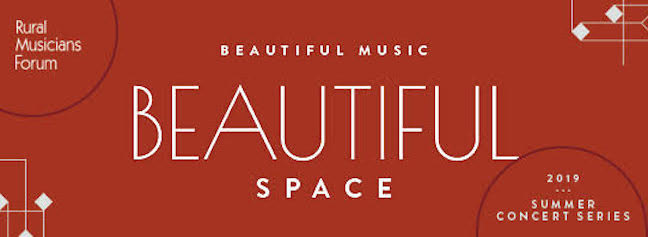
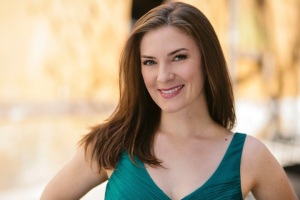
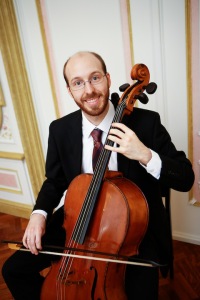
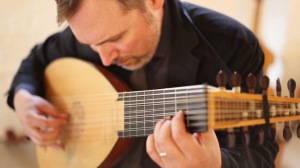


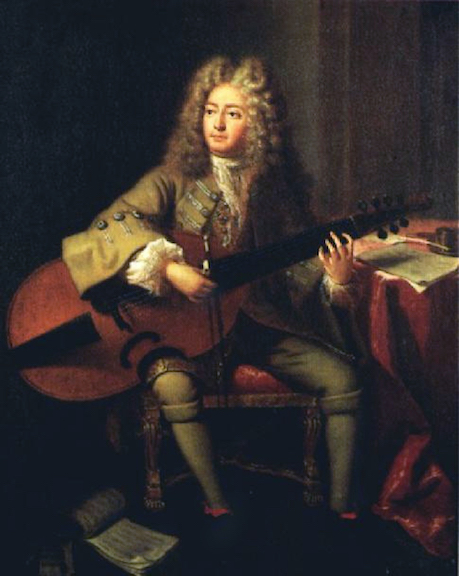



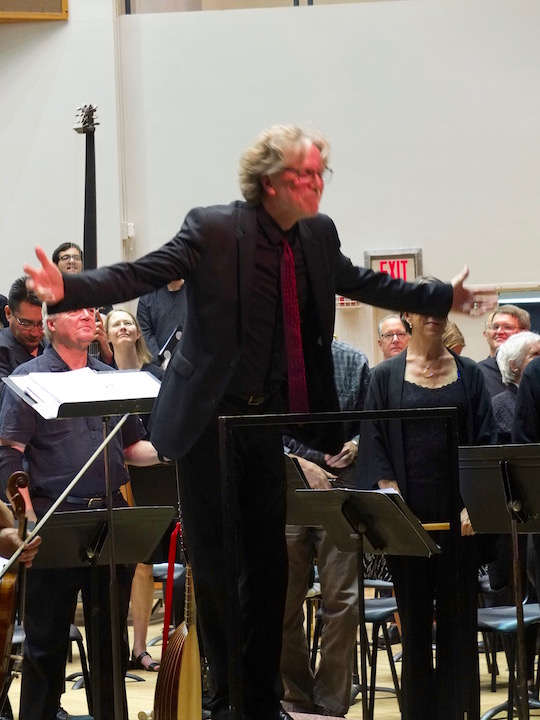




















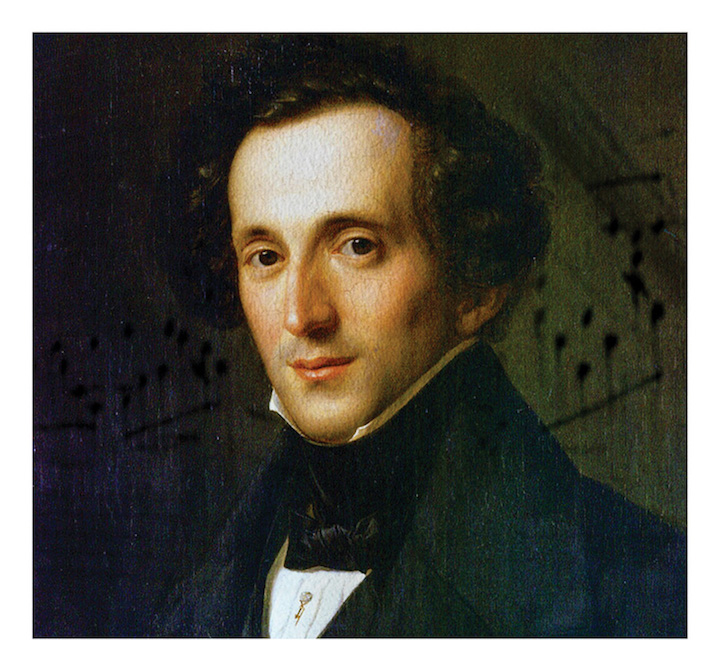
Which classical composer has helped you the most during the Covid-19 pandemic?
6 Comments
PLEASE HELP THE EAR. IF YOU LIKE A CERTAIN BLOG POST, SPREAD THE WORD. FORWARD A LINK TO IT OR, SHARE IT or TAG IT (not just “Like” it) ON FACEBOOK. Performers can use the extra exposure to draw potential audience members to an event. And you might even attract new readers and subscribers to the blog.
By Jacob Stockinger
The holidays are over and as we close in on marking a year of the coronavirus and COVID-19 pandemic, The Ear has a question:
Which composer has helped you the most to weather the pandemic so far?
The Ear wishes he could say Bach, Haydn, Mozart, Beethoven, Schubert, Chopin or Brahms. And the truth is that they all played a role, some more than others.
But The Ear was surprised by the composer whose works he most listened to and liked — Antonio Vivaldi (below), the Red Priest of Venice who lived from 1678 to 1714 and taught at a Roman Catholic girls school.
Here is more about his biography, which points out that his work was neglected for two centuries and began being rediscovered only in the early 20th-century and still continues being rediscovered to the present day: https://en.wikipedia.org/wiki/Antonio_Vivaldi
The Ear isn’t talking about popular The Four Seasons although that set of 12 solo violin concertos has its charms and originalities.
The Ear especially appreciated the lesser-known concertos for two violins and the cello concertos, although the concertos for bassoon, flute, recorder, oboe, lute, trumpet and mandolin also proved engaging, as did the concerto grosso.
It was the 20th-century composer Igor Stravinsky (below) – the modern pioneer of neo-Classicism — who complained that Vivaldi rewrote the same concerto 500 times. “Vivaldi,” Stravinsky once said, “is greatly overrated – a dull fellow who could compose the same form many times over.”
But then did anyone turn to Stravinsky – who, The Ear suspects, was secretly envious — when they needed music as medicine or therapy during the pandemic?
Vivaldi was, in fact, a master. See and hear for yourself. In the YouTube video at the bottom, you can hear a performance of Vivaldi’s Concerto Grosso in G minor, RV 535, performed by the Akademie für Alte Musik Berlin.
Why Vivaldi? You might ask.
Well, it’s nothing highbrow.
The best explanation is that Vivaldi’s music simply seems like caffeine for the ears and sunshine for the eyes. His music isn’t overly introspective or glum, and it isn’t too long or melodramatic.
The melodies and harmonies are always pleasing and energizing, and the tempi are just right, although bets are that the music is much harder to play than it sounds.
In short, Vivaldi’s extroverted music is infectious and appealing because it just keeps humming along — exactly as those of us in lockdown and isolation at home have had to do.
Happily, there are a lot of fine recordings of Vivaldi by period instrument groups from England, Italy and Germany and elsewhere that use historically informed performance practices. But some the most outstanding recordings are by modern instrument groups, which should not be overlooked.
With a few exceptions – notably Wisconsin Public Radio – you don’t get to hear much Vivaldi around here, especially in live performances, even from early music and Baroque ensembles. If you hear Vivaldi here, chances are it is The Four Seasons or the Gloria. Should there be more Vivaldi? Will we hear more Vivaldi when live concerts resume? That is a topic for another time.
In the meantime, The Ear wants to know:
Which composer did you most listen to or find most helpful throughout the pandemic?
Leave your choice in the comment section with, if possible, a YouTube link to a favorite work and an explanation about why you liked that composer and work.
The Ear wants to hear.
Thank you and Happy New Year!
Share this:
Tags: #AntonioVivaldi, #BaroqueBassoon, #BaroqueEnsemble, #BaroqueFlute, #BaroqueMusic, #BaroqueRecorder, #BassoonConcerto, #BerlinGermany, #BlogPost, #BlogPosting, #CelloConcerto, #ChoralMusic, #ChristianChurch, #ChristmasHoliday, #CircleofSound, #ConcertoGrosso, #CoronavirusPandemic, #COVID-19, #FacebookPost, #FacebookPosting, #FavoriteComposers, #FluteConcerto, #FranzJosephHaydn, #FranzSchubert, #FredericChopin, #GreatBritain, #HappyNewYear, #HistoricallyInformedPerformancePractices, #IgorStravinsky, #InstrumentalOrchestra, #ItalianBaroque, #JacobStockinger, #JohannesBrahms, #JohannSebastianBach, #LiveMusic, #LivePerformances, #LudwigVanBeethoven, #LuteConcerto, #MandolinConcerto, #ModernInstrument, #MusicTherapy, #NeglectedMusic, #NewYear's, #OboeConcerto, #OnlineConcert, #PeriodInstruments, #PresentDay, #RecordedMusic, #RecorderConcerto, #RedPriest, #RomanCatholic, #RomanCatholicism, #Self-Isolation, #Self-Quarantine, #StringMusic, #ThankYou, #TheEar, #TheFourSeasons, #TheU.K., #TrumpetConcerto, #Two-PartInvention, #UnitedKingdom, #VeniceItaly, #ViolinConcerto, #VirtualConcert, #VocalMusic, #Wikipediabiography, #Wikipediaentry, #WindMusic, #WolfgangAmadeusMozart, #YouTubevideo, 20th-century, Akademie Für Alte Musik Berlin, all, Antonio Vivaldi, appealing, Arts, audience, Bach, Baroque, Baroque music, Bassoon, bassoon concerto, Beethoven, Berlin, best, biography, blog, Brahms, caffeine, carhm, cellist, Cello, Cello Concerto, century, Chopin, choral music, Christian church, Christianity, Christmas, church, Classical music, comment, complain, composer, Concert, concerto, Concerto Grosso, conductor, coronavirus, dull, Early music, ears, energetic, energizing, energy, England, ensemble, envious, exception, explanation, extrovert, eyes, Facebook, Facebook post, Facebook posting, favorite, Fellow, flute, flute concerto, form, forward, Franz Joseph Haydn, Franz Schubert, Frédéric Chopin, girl, girls, Gloria, glum, Great Britain, group, Happy New Year, harder, harmony, Haydn, hear, help, highbrow, historically informed performance practices, Holiday, Home, hum, humming, Igor Stravinsky, infectious, instrumental music, introspective, isolation, Italian, Italian Baroque, Italy, Jacob Stockiner, Jacob Stockinger, Johann Sebastian Bach, Johannes Brahms, like, listen, live, live music, live performances, lockdown, long, lonk, Ludwig van Beethoven, lute, lute concerto, Madison, mandolin, mandolin concerto, medicine, melodramatic, melody, modern, modern instrument, Mozart, Music, music therapy, neglected, neglected music, neo-Classicism, New Year, New Year's, Oboe, oboe concerto, oboist, online, opera, Orchestra, originality, overlook, overrated, pandemic, period instruments, pioneer, play, please, pleasing, popular, post, posting, present, present day, priest, quarantine, question, recorded music, recorder, recorder concerto, recording, Red Priest, rediscover, resume, rewite, rewrote, role, Roman Catholic, Roman Catholicism, RV, same, school, Schubert, secretly, see, share, simple, solo violin, Sonata, Sound, Stravinsky, string music, Student, sunshine, symphony, tag, teach, Teacher, tempi, thank you, The Four Seasons, therapy, times, topic, Trumpet, trumpet concerto, truth, Two-Violin Concerto, Tye Ear, U.K., United Kingdom, United States, Venice, video, Viola, Violin, Violin concerto, violinist, virtual, Vivaldi, vocal music, weather, Wikipedia, wind music, wisconsin public radio, wish, Wolfgang Amadeus Mozart, work, works, year, yourself, YouTube